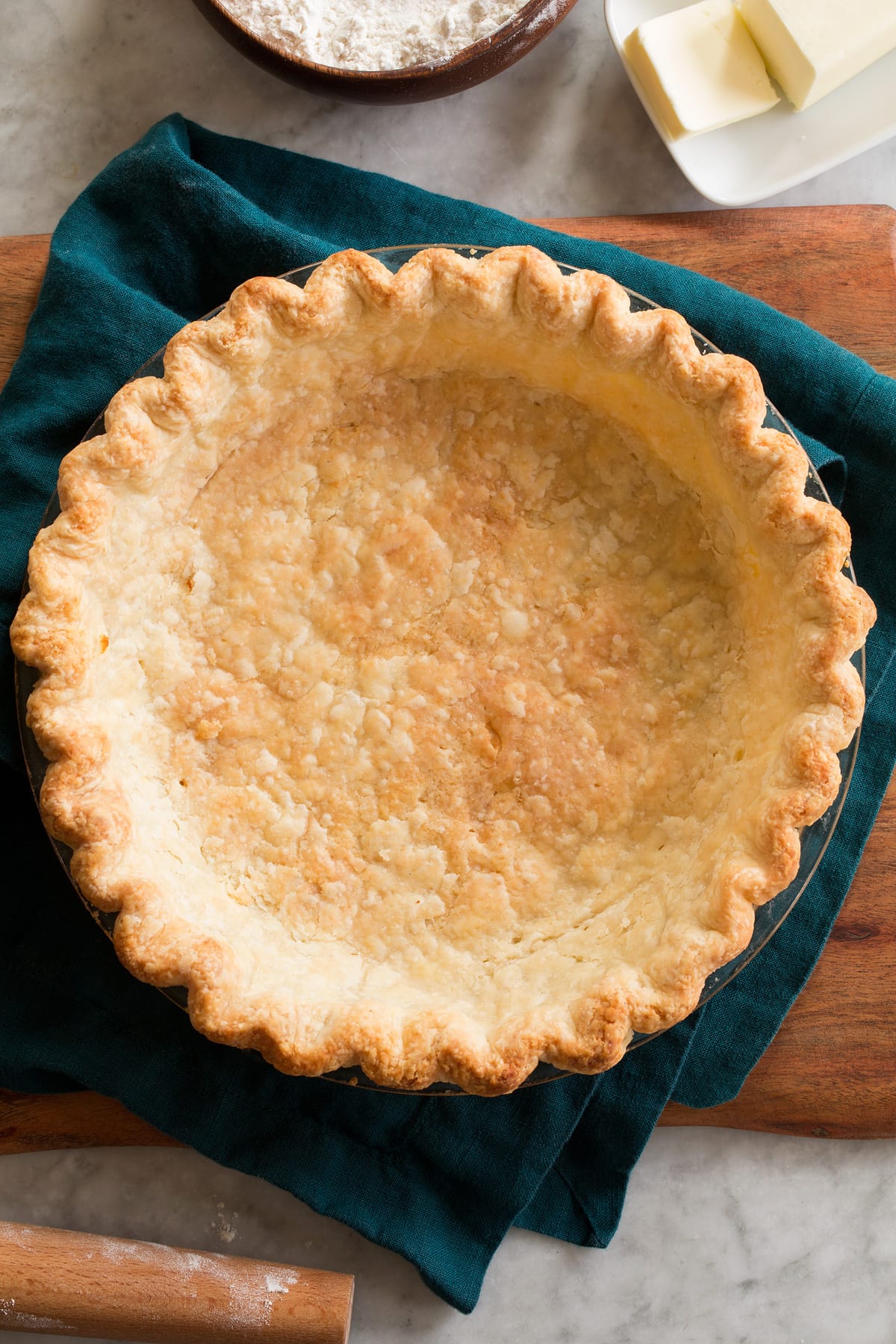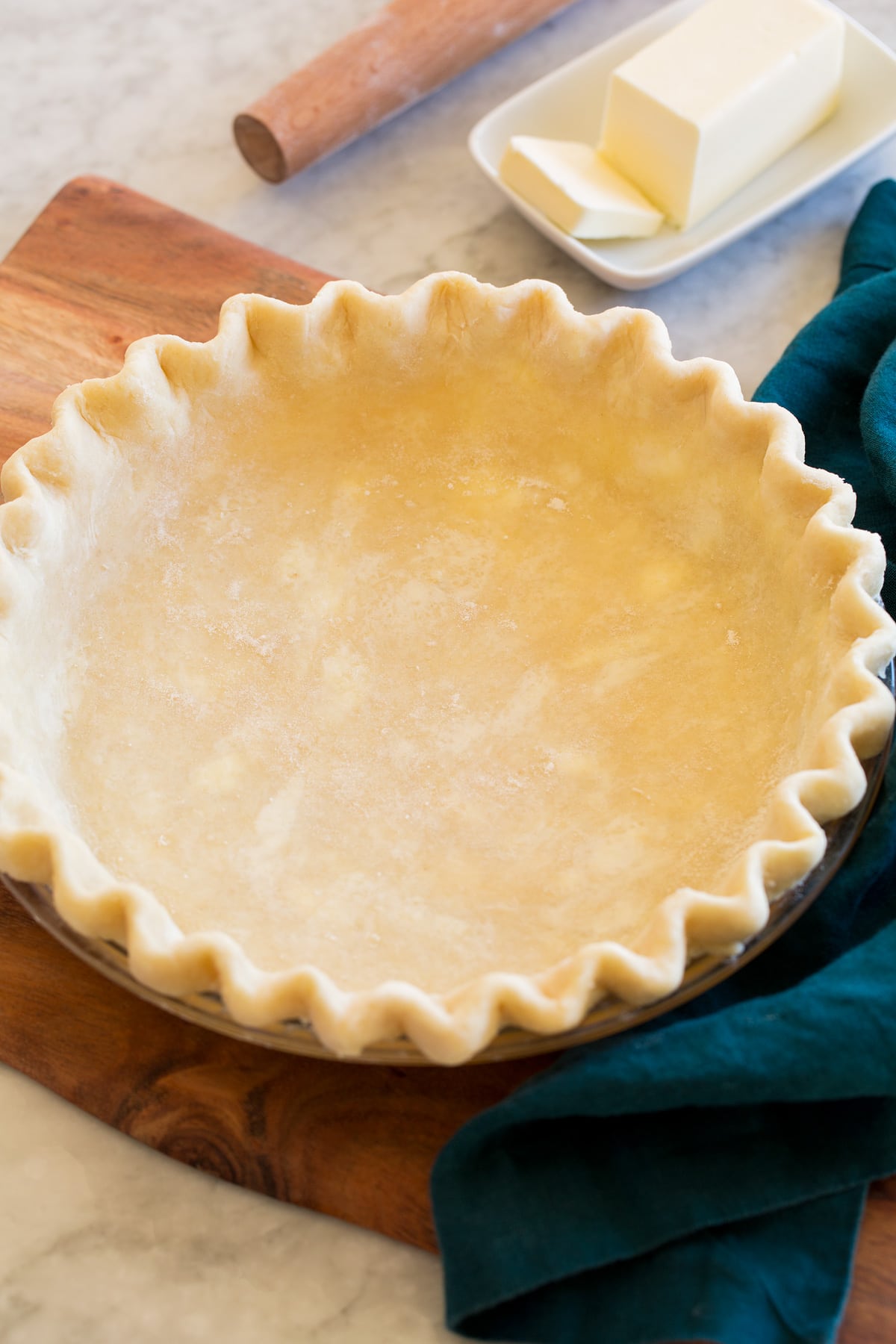Pie Crust {+ How to Blind Bake}
Easy Pie Crust - it's the flakiest, all-butter pie crust (no shortening or lard here), with a crisp and tender texture and delicious flavor.
It's an old fashioned, made by hand recipe (with a food processor option as well) that's a million times better than store-bought and worth every ounce of effort.

My Idea of the VERY BEST Homemade Pie Crust
Ah the humble pie crust made with the most basic ingredients yet it's always something (when done right) that leaves people smitten.
I've made countless pie crusts over the years and it wasn't until this past year (after I made 15 or more crusts in a few weeks, I've been annoyingly obsessive about it) that I finally felt I could make the best pie crust we've had.
Just how good were they? They tasted incredibly delicious bare without the need of a filling. Many of them we were breaking off generously sized, super flaky pieces before they had a chance to be filled.
My mom finally gave me the " this is better than mom and grandma made" approval so I knew I'd finally gotten in right.
I hope you love it as much as we do in all it's glorious, golden brown, tender, buttery deliciousness!
It is one of those things that takes some practice but to get a great head start I've listed a step-by-step photo guide and have shared many tips for success so you can have a picture perfect pie crust you'll be proud of this holiday season!
There are also directions included for making the pie dough in the food processor as well if you're interested (personally I favor the handmade option, but let us know which you like best!).
Tips for Making the Best Pie Crust
The butter:
- Be generous with the butter! It gives the pie crust a delicious rich flavor. Having the right ratio keeps the crust from tasting floury.
- Use very cold butter, it will keep it from melting right into the dough and creates wonderfully flaky layers.
- Stick with unsalted butter. It doesn't melt as quickly as salted butter, plus by using unsalted you can control exactly how much salt goes into the recipe.
- In warmer climates you may find freezing the butter for 20 minutes beforehand works better.
- Work quickly. If you find butter is softening then chill intermittently through process as needed.
- Cut butter into flour just until you see pea size and double pea size clumps, this equals more air pockets and some slightly higher flakier layers. Less butter clumps throughout makes a denser dough.
- Bake with the pie pan set one a baking sheet so it catches buttery drips over the edges so they don't end up at the bottom of the oven.
The water:
- Only use very cold ice water. Fill the water with plenty of ice about 10 minutes before you plan on using it. Again it's all about a cold dough.
- Be sure there's no ice cubes in the water you measure out or you'll end up with a pocket of water in the crust once it melts.
- Water amount needed can vary based on altitude, brand of flour used, and climate, among other things.
- So with that said just be mindful when adding the water that you add just barely enough to moisten the dough so your crust doesn't end up oversaturated and soggy (we want crisp and flaky crust right?). It should just hold together when you clump up a portion of it in your hand.
The process:
- Don't over-work the dough so it's more tender. You'll have to compress it together but you don't want to knead like a pizza dough or bread dough. Just turn it enough to bring it together.
- Pinch and seal any cracks you see before chilling. They spread a lot when rolling and it's just easier to deal with them beforehand. Even still there will likely be some smaller ones when rolling so pinch them back together.
- Rest the pie crust dough in the fridge. It allows time for the water time to hydrate the dough and evenly distribute throughout, it also allows time for the gluten to relax making it easier to roll.
- Use a fair amount of flour when you roll out your dough (both below and sprinkling over it) or those buttery streaks can stick to the surface. Some people like to lift the dough and turn as they roll it out which is another option as well but I skip this.
- Work quickly when rolling, and when shaping the pie crust into the pie dish. Again it's all about keeping it cold and not over-working it.
- Pie crust should be rolled out to about 1/4-inch thick and usually a few inches wider than your pie dish you're using.
- I like to allow a generous overhang of dough along the edges of dish, then tuck that under creating a nice flaky rim with lots of layers.

from Cooking Classy
Nhận xét
Đăng nhận xét